What shadows and tides taught me about finding ease: Part 4a of the Camino series
This week my daughter Marielle Velander reflects on the question she asked herself on the Camino: How can I live with more ease? We publish the first part today and the second on Thursday.
It was another misty morning on our seventh day of walking. Just a stone’s throw up the coast, the fog hovered and flowed with the river Minho to the wild Atlantic Ocean. Spain on the other side was out of sight and it was only my mother and I, breathing in the crisp air on this September day in northern Portugal, halfway on a pilgrimage we were still trying to make sense of.
The next two nights we had booked our only rest day at the pilgrim’s hostel Alvorada Medieval, run by a Portuguese couple that had made it their mission to make pilgrims’ experience of the Camino as magical as they themselves found it when they stumbled upon this little village. This is where I was confronted with one of my greatest challenges of the Camino: to rest.
As you have learned in my mother’s earlier essays, we each asked ourselves a “burning question” for the Camino. “Burning” is maybe the wrong descriptor for this exercise, as it didn’t feel as much ignited by fiery passion as rooted in our observation of nature, flowing and crashing like the rivers and seas we passed, and rising slowly like mist upon a riverbank or the rustle of leaves as a breeze blows through a forest.
My question was: How can I live with more ease?
I have often been told I don’t relax like others do. I have an intensity and an energy that is both a blessing and a burden. I’m sure many ambitious and perfectionist individuals—especially women—feel this way, too. I am an expert planner; the person people rely on to make that reservation, look up the directions, run the workshop and make dinner the same day. I try to pack in as much as I can into this little life and if I have to let anything go or if something doesn’t go as I had hoped, I berate myself. Classic, right?
And yet there is a creative, impulsive, and inspired force behind all that energy that seeks a release from all the structure I’ve so carefully built to control my life, to keep myself safe. I am terrified that if I let go of some of this control, I will lose the people I love, all those beautiful souls who have learned to rely on me.
My question, and our two week journey along the thousands-year old Camino de Santiago, kept me returning to the elements we passed, and one in particular: Water. How to flow like water? What is the relationship of the river to the sea? Why should I welcome the rain? Where would we be without this simple substance to sustain us?
The water in all of us
At dinner our second night at Alvorada Medieval, I was seated next to an Argentinian woman. One of my favorite things about the Camino is how quickly you can dive into deep and spiritually compelling topics with relative strangers. This woman showed me the crystal she considers herself the steward for. This crystal has connected her to a global community that believes in the power of these crystals to activate every strand of our DNA, to make us truer to ourselves.
That is certainly a compelling concept, but what was more intriguing to me was how she thought about the four elements and their role in our bodies. She said that earth is in our feet and legs, grounding us. Fire is in our abdomen, stomach and heart (“es la cocina” she laughed as she rubbed her belly, already digesting our vegetarian pilgrim’s dinner). Air is our throat and head, our voice and our thoughts rising up. “But what about water?” I asked. “Ah, that is in everything. Water connects it all.”
Water connects us all. Moments of our Camino flashed in my mind.
The sunset seen in solitude from the beach in Povoa do Varzim, running down the street to catch it even after a 25km day, eased by a swig of port. Just as the sun began to slip below the horizon, two girls, blonde and brunette, ran down to the sea, their long hair flying in the wind. They embraced as their friend took a picture, and I watched with tears in my eyes. The scene reminded me of my late best friend, who I met at 18 and started mourning at 28, and in whose honor I chose to walk this Camino.
The song I listened to while watching that sunset made its way into the poem I wrote sitting in the silent glade of another river as I watched the first leaves of fall descend to the mirrored surface.
The komorebi in all of us
Light was another metaphor that kept coming up, and its less appreciated twin, shadow. One morning, on a part of the Camino called the Spiritual Variant, we rose before dawn. Stars blanketed the indigo sky as we approached an eighth century monastery, compelled by curiosity and some anxiety to ensure the local nuns could help us transport our bag to our next location. We heard Cistercian nuns sing prayers to their lord as light gradually made its way onto the thick stone walls. It started one of our most magical days on the camino, where we descended down the “Ruta de Pedra e Agua”, following the course of the Armenteira river through fairytale forests and vineyards down to the sea.
I introduced my mother to the Japanese word “komorebi” that day as we watched the shadows dance with the morning light under that emerald canopy of ancient trees. The word describes the pattern trees make on a path when the sun shines through them. As we scattered my grandmother’s ashes, this time into the river that nourished the trees she would have hugged, I sang “Moon River” and recalled that week’s passage about light from my favorite literary newsletter, The Marginalian.
“One discovers the light in darkness, that is what darkness is for; but everything in our lives depends on how we bear the light. It is necessary, while in darkness, to know that there is a light somewhere, to know that in oneself, waiting to be found, there is a light.” - Maria Popova
This was the exact passage my amazing partner pulled out for me after I sent him the article, and the musician that he is, he sent me a love song perfect for it (“There is a light that never goes out” by the Smiths is an ode to love that surpasses death).
As someone in my life who seems to be so connected to his light, so honestly composed of it, I was surprised that this piece about the darkness inside resonated with him. But of course it did. We are all just the shadows of trees, playing on the ground in the sunlight to the breeze. Earth, fire, and air connected into the semblance of a person thanks to that substance some may call water, but I prefer to call the komorebi of love.
The tides in all of us
It was no surprise that “Moon River” was top of mind as we ventured into that Galician forest. After a magical final evening at Alvorada Medieval, marked by a spontaneous sing-along among strangers representing ten different nationalities, we crossed the bridge into Spain. We did a brief tour of the cathedral of Tui, before continuing along country paths to a garden restaurant with a surprisingly good playlist. As I returned from the bathroom within the old stone house, I found my mom in the garden crying. The speakers were playing “Moon River”, my grandma’s favorite song (verified by a questionnaire I sent her at age 8 that we recently resurfaced).
Rivers and moons are intimately connected, in the same way women are to the mystical forces of our earth. As we approached the full moon, which would meet its peak at the end of our journey, the tides of the Atlantic listened as intently as the flows of my body, preparing to release this month’s seed just as the crescent above grew into an orb.
My mother is now past this monthly ritual of womanhood, but we still discussed it in the context of the generations who came before us. That innately creative power of women to form and feed an entire human being is one of the most remarkable miracles of life. Naturally this would come up as I took on this ambitious physical challenge with my mother at the exact age she was when I grew from seed into human inside her. Half a lifetime of hers later we engage in a different kind of exercise in testing what our bodies can accomplish.
Towards the end of the Camino we made it back to the Atlantic coast, where we started but this time we were upon Spanish lands. After another magical oceanfront sunset and a good night’s rest, we boarded a boat with volatile times due to the extreme tides of the area. As we headed out of the bay crowded with mussel farms, they informed us the tides can vary as much as four meters here. We looked out over islands of forest and grass and Viking ships moored by old Celtic forts.
As the boat sped up along the mouth of a river, a group of women began to dance. The wind whipped my hair around my face, and I started writing this poem.
The second part of Marielle’s essay will appear in your inboxes on Thursday.
Marielle is an anthropologist, poet, and avid traveler currently residing in Barcelona, Spain. She has worked in operations and research across multiple sectors for almost a decade, while living in places as diverse as Berlin, Paris, New York City, London, and Amman. In her free time she enjoys going to concerts (her partner is a musician), trying good food and wine (her partner is conveniently also a sommelier), and planning her next adventure. To hear all about her recent escapades and top travel tips, sign up for her soon-to-be launched publication the Adventure Agenda.
Hop over to Part 1, Part 2, and Part 3 if you want to catch up. Then next week we bring you Part 5, We Are All Rivers, the story of our Camino project where we asked other pilgrims “What song keeps you going when life gets hard?” Finally In Part 6, Planning Your Camino, Oct 29, we share all the practical tips and resources we used in planning this journey so you can plan yours.
For paid subscribers, there’s an hour-long live Zoom call Saturday November 2 at 8am PST/11am EST/5pm CET to answer all your questions about the Camino. We love sharing about this incredible adventure!
As always, paid subscribers also receive a voice-over from the author of the week’s essay.






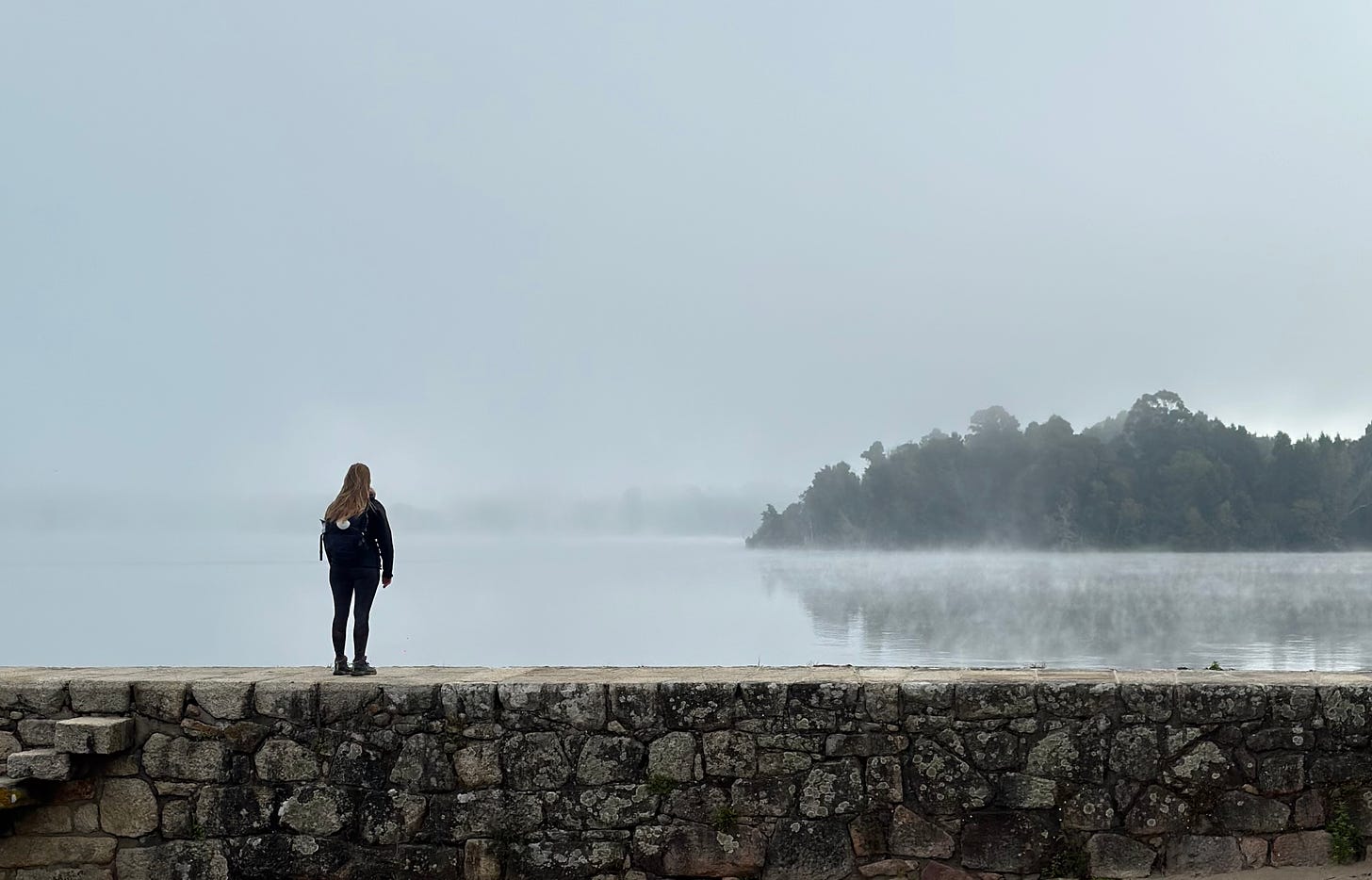
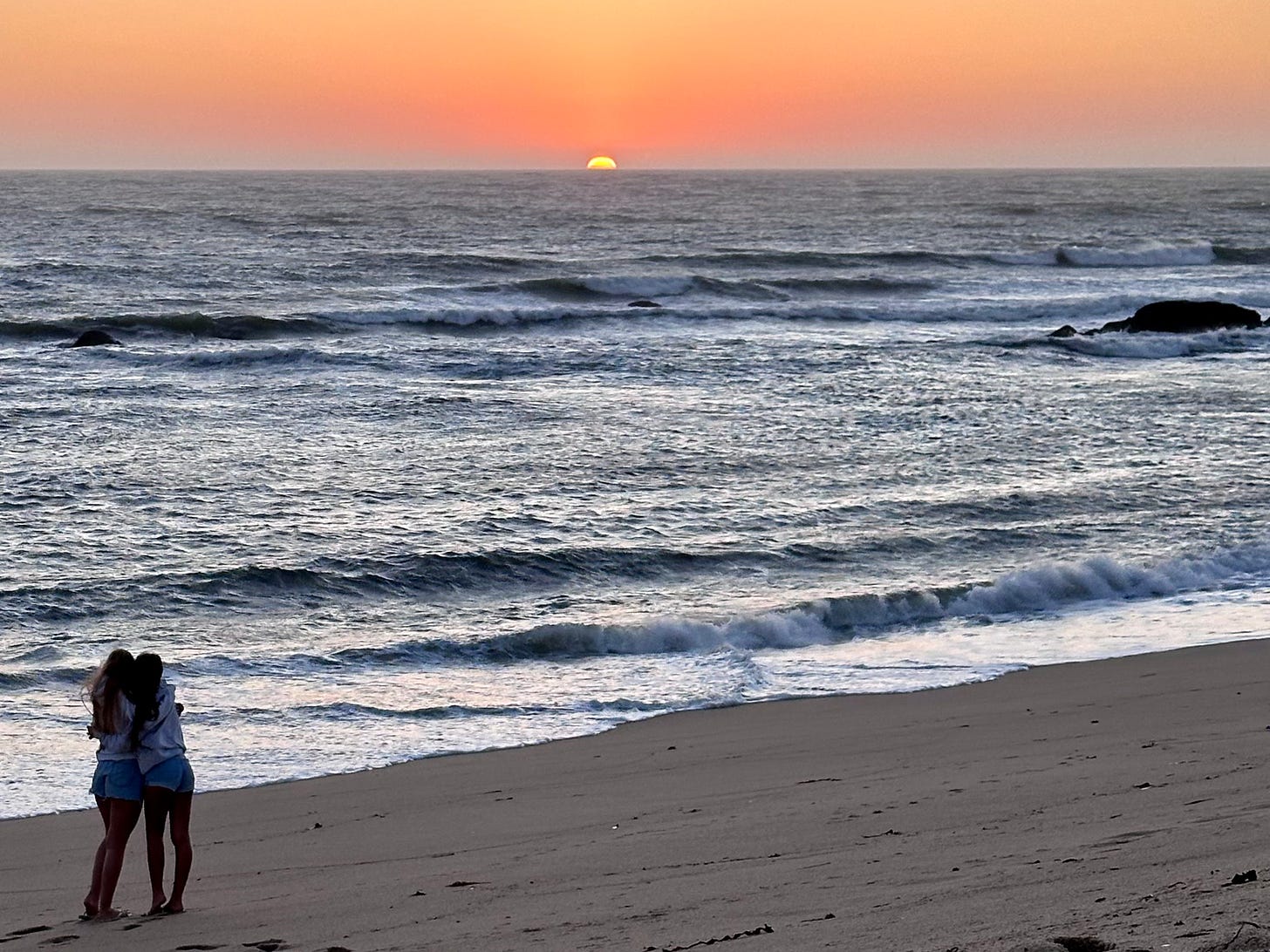
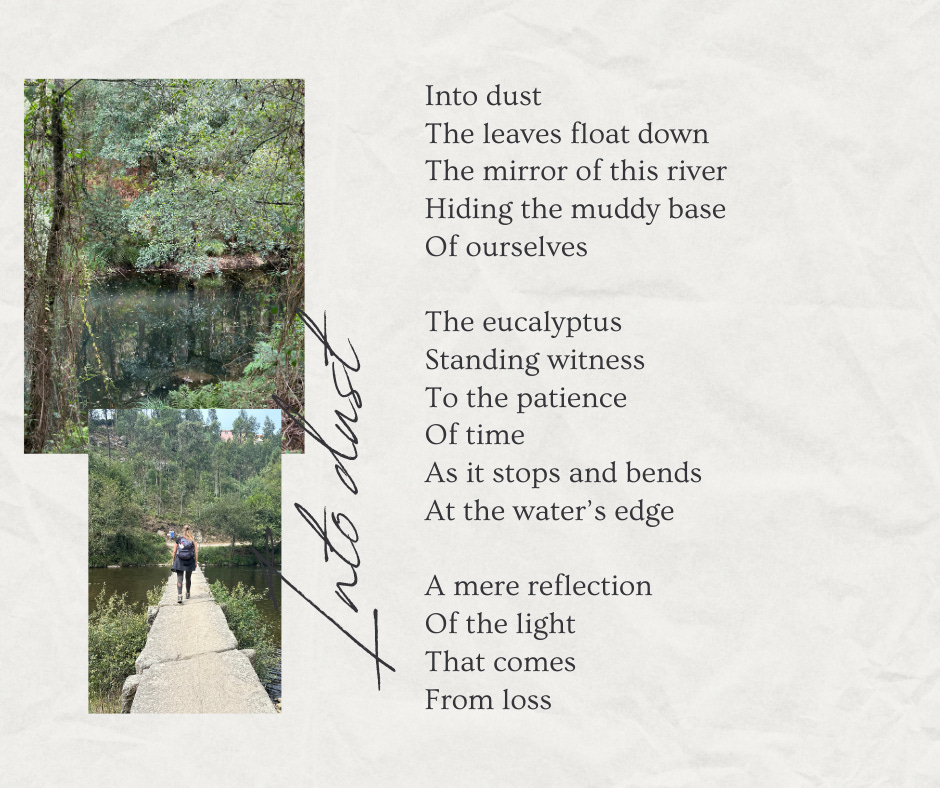
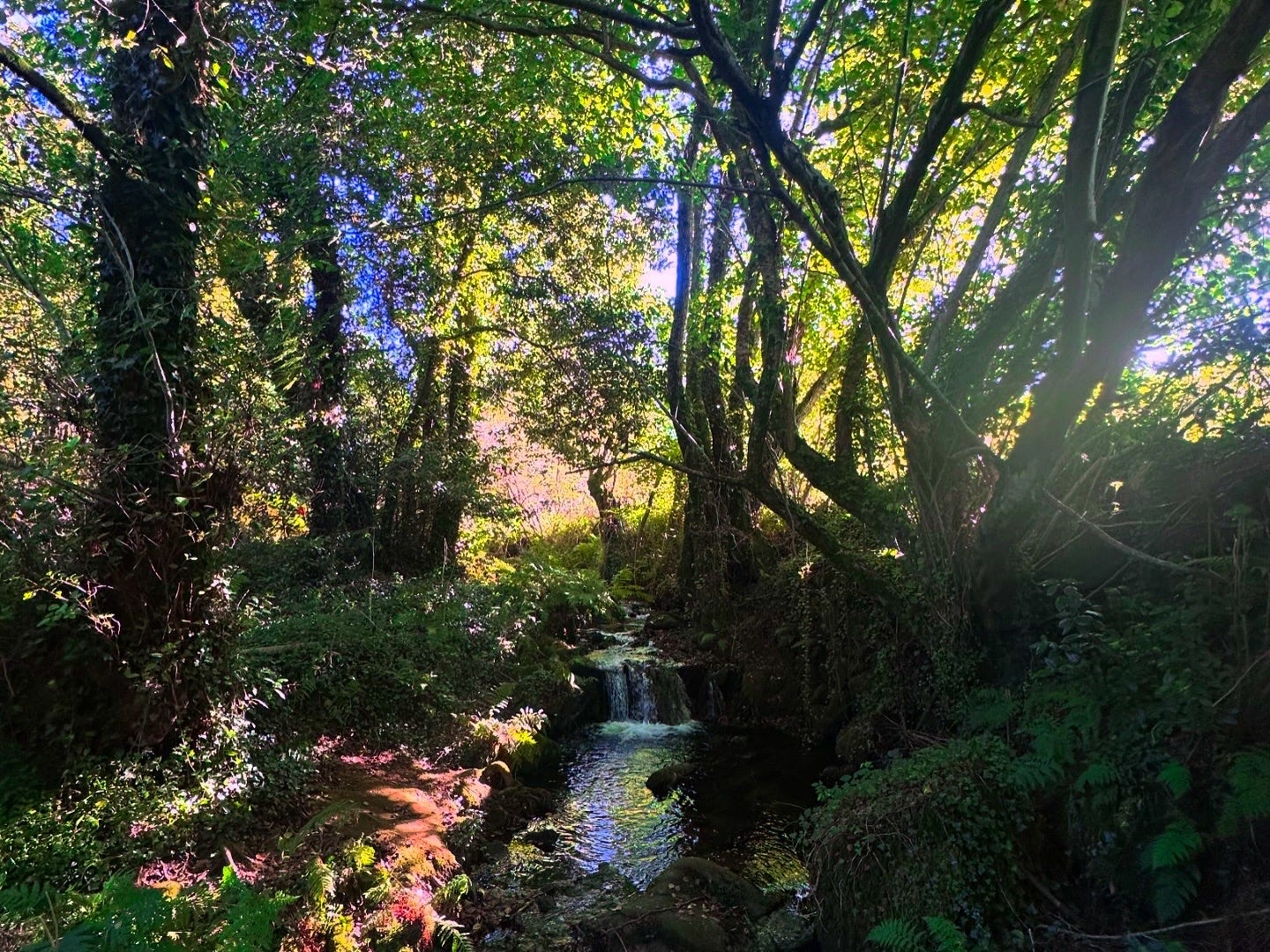
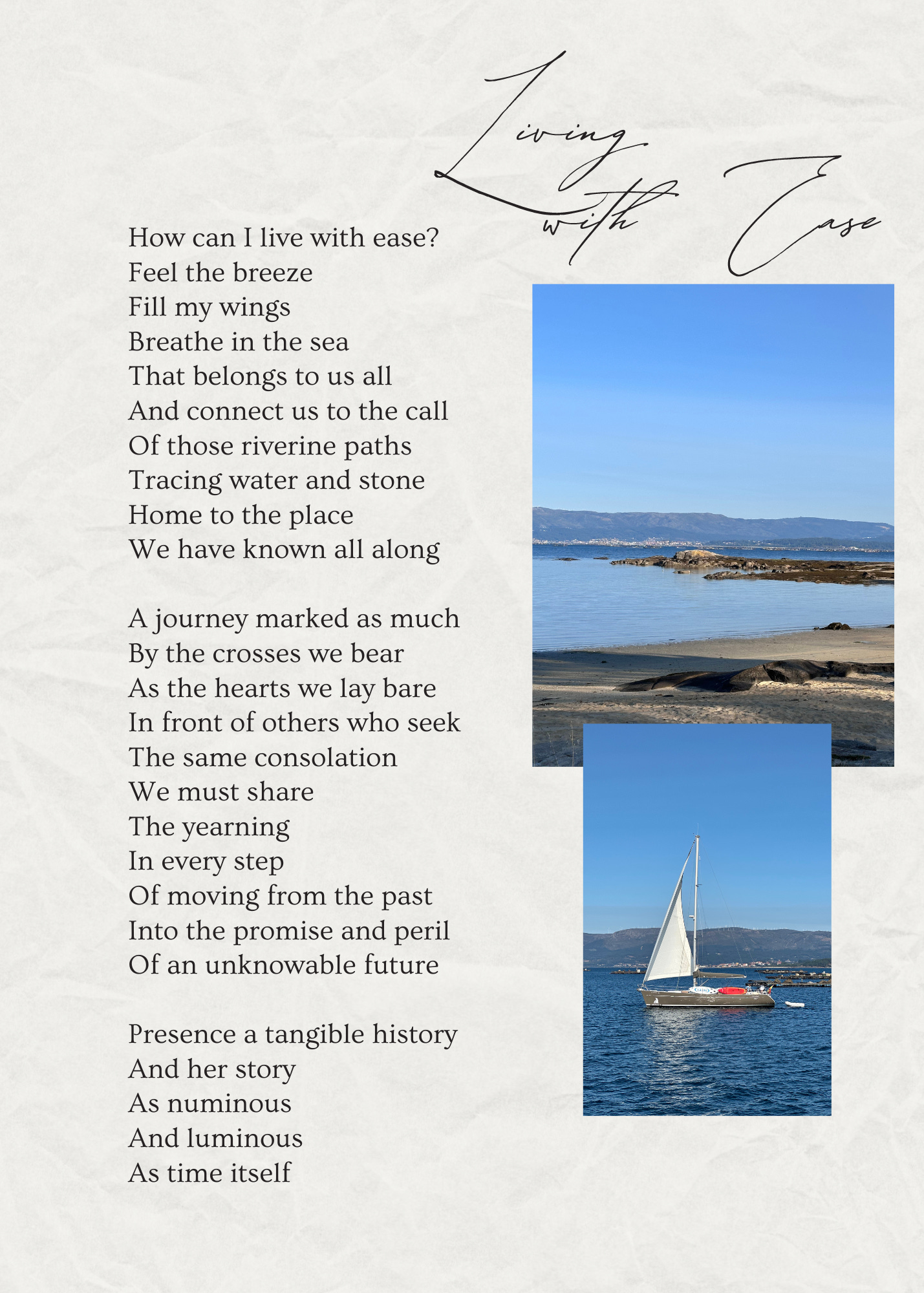

Thank you for this beautiful light in my heavy day, Amy.
So moving and beautifully written Marielle! I loved reading your mom's experiences of the trip, and bookending with your soul-searching reflections was the icing on the cake for the series. Good luck in what I can only imagine is a continuos pursuit to finding ease. <3